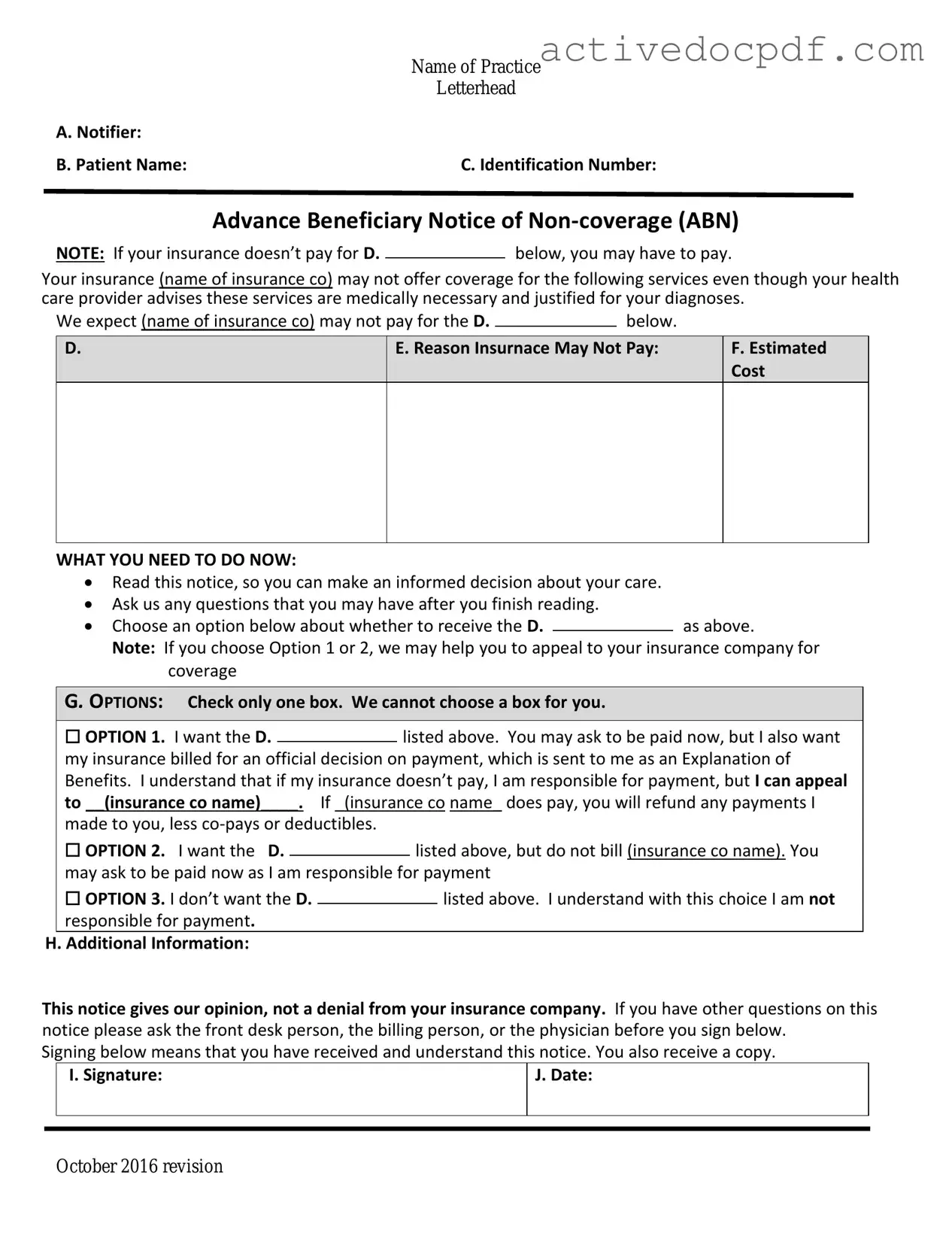Free Advance Beneficiary Notice of Non-coverage PDF Form
The Advance Beneficiary Notice of Non-coverage (ABN) is a crucial document used in the Medicare system to inform beneficiaries when a service may not be covered. This form allows patients to understand their financial responsibilities before receiving specific medical services. By signing the ABN, beneficiaries acknowledge that they may have to pay for the service if Medicare denies coverage.
Edit Form Online
